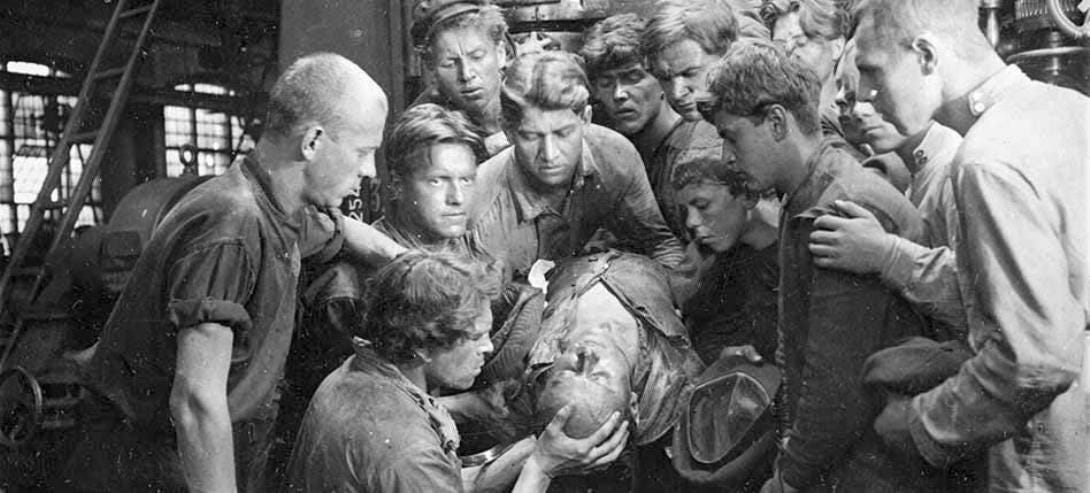The death of a friend, kindles the flames of a Strike!
0January 24, 2022 by fitzgeraldam
This image strikes me as more important than any single other image in the film, because it is the extreme of what can happen when the working class is treated unfairly, as is what Eisenstein tries to show in the film. The shot is on a spectrum of dark to light from left to right. Surrounding their friend, the workers look mournfully on as they discover his suicide and are about to read the letter on why such an act was committed. The closest co-worker to the victim of the suicide is a child and it almost seems as the workers get farther away from their comrade, the older they get. The victim’s shirt is unbuttoned and he looks more unkempt and stressed than the rest of the workers. They hold him by the head and body as if lowering him slowly to the ground. The feeling of sadness is what strikes first, and the anger is to come after. The strike is not because of this one action alone, but it is what lights the tinderbox that is the workers of the factory. The suicide leads to sadness which leads to anger which leads to the strike which had already been talked about to come to fruition. The final detail that is important in this scene is the feeling. The shot is less of a co-worker relationship in modern times and more of a familial connection. They hold the man as if he is a fallen brother, as they are united in oppression.

Category Uncategorized | Tags:
Leave a Reply